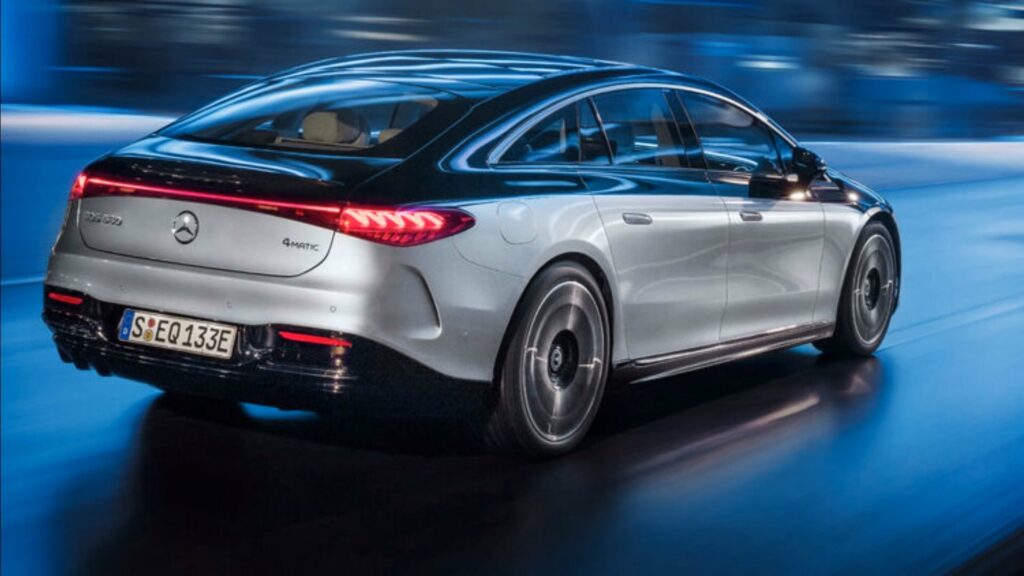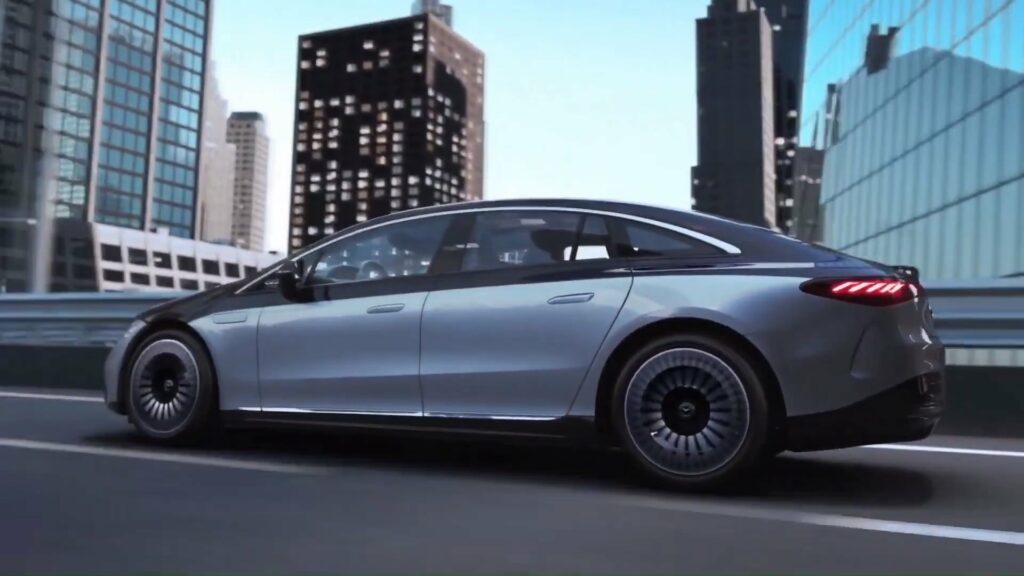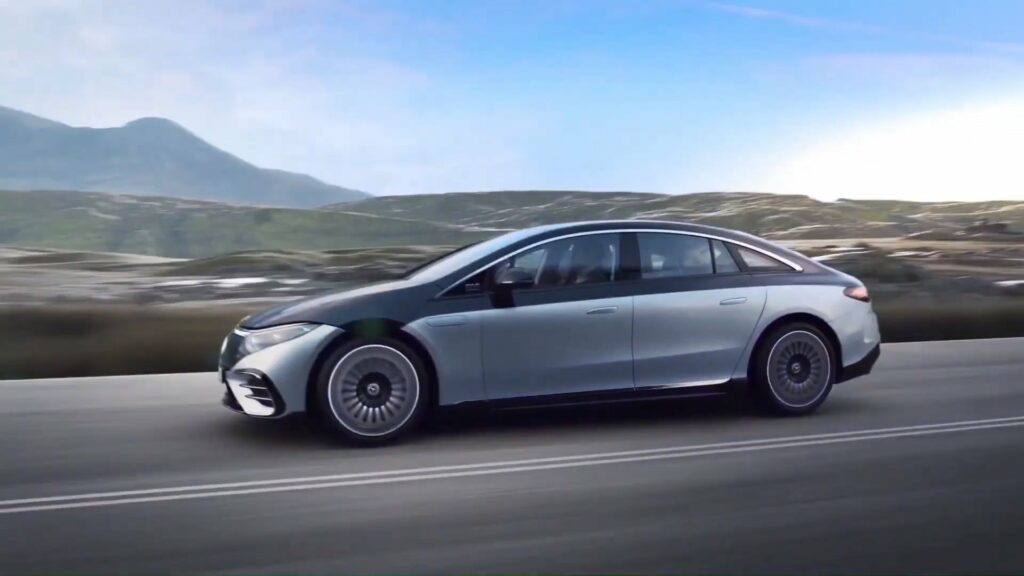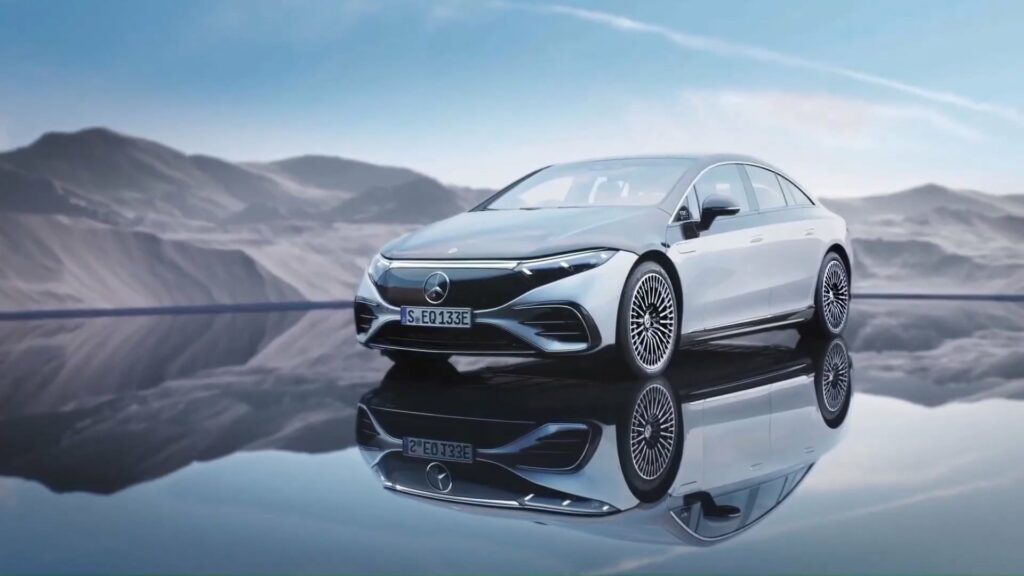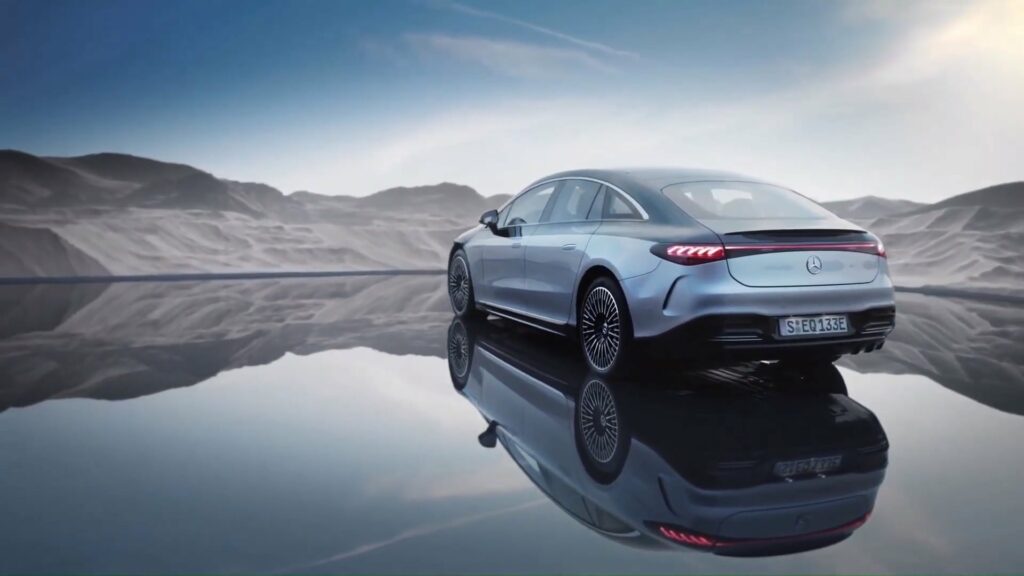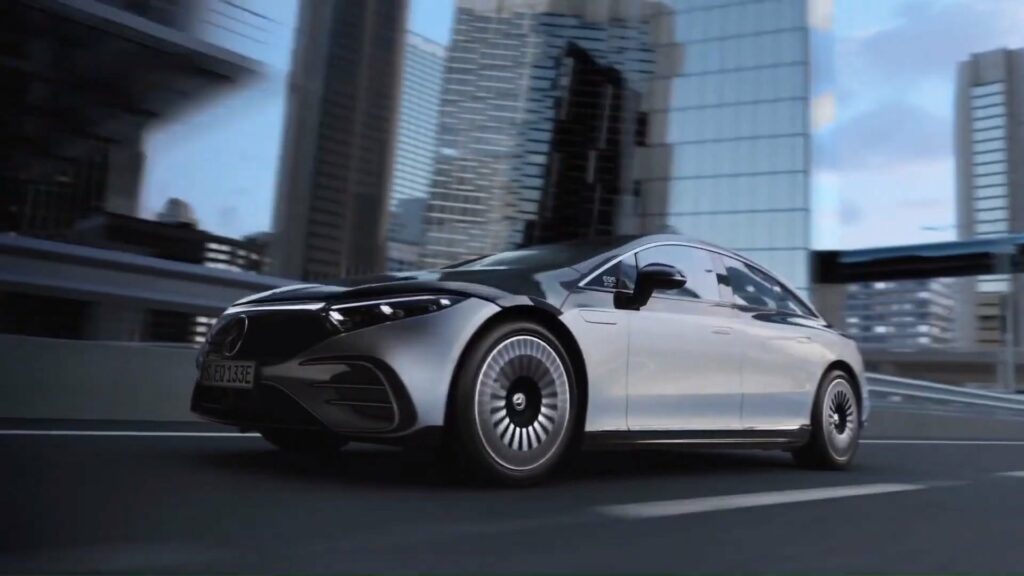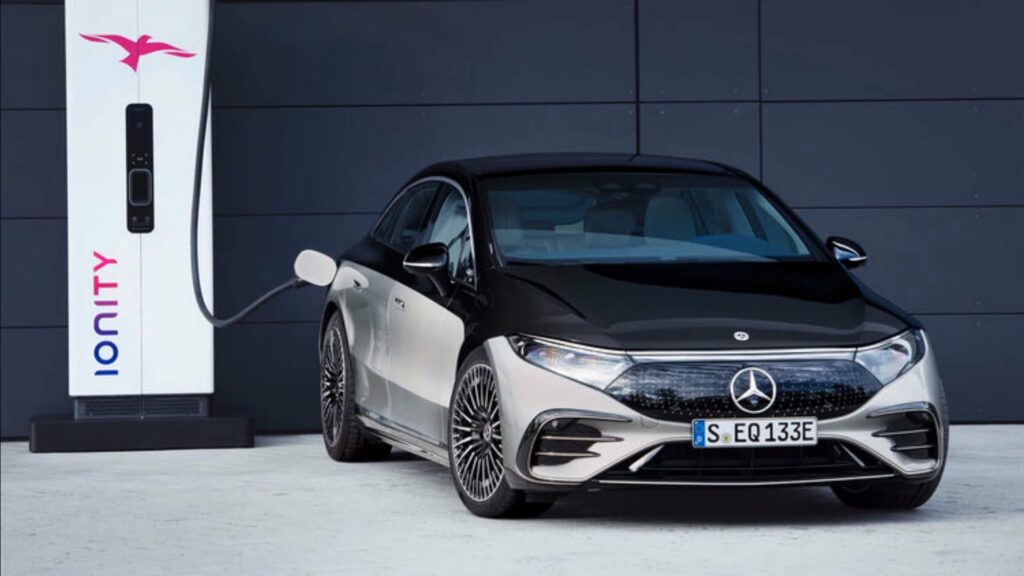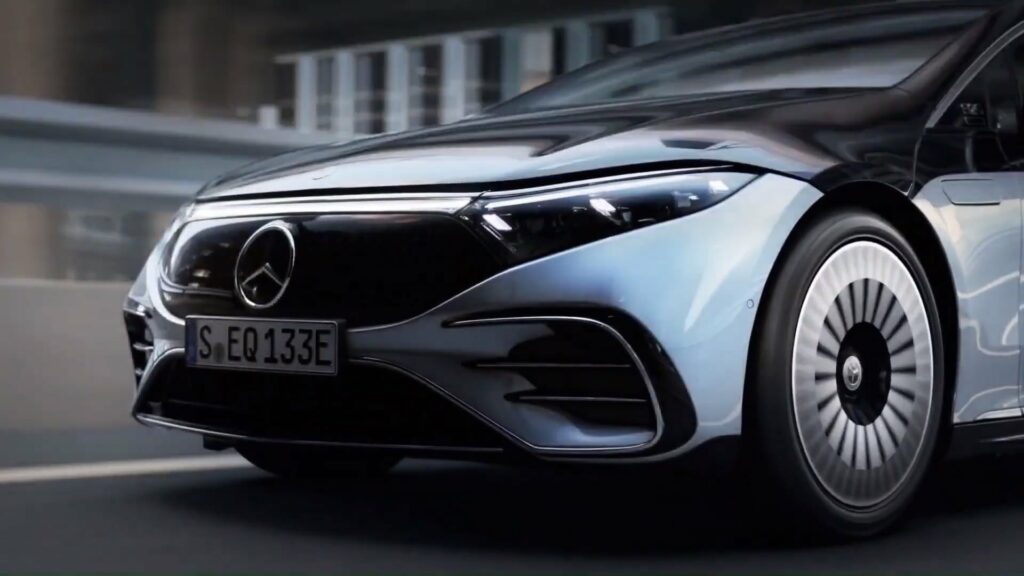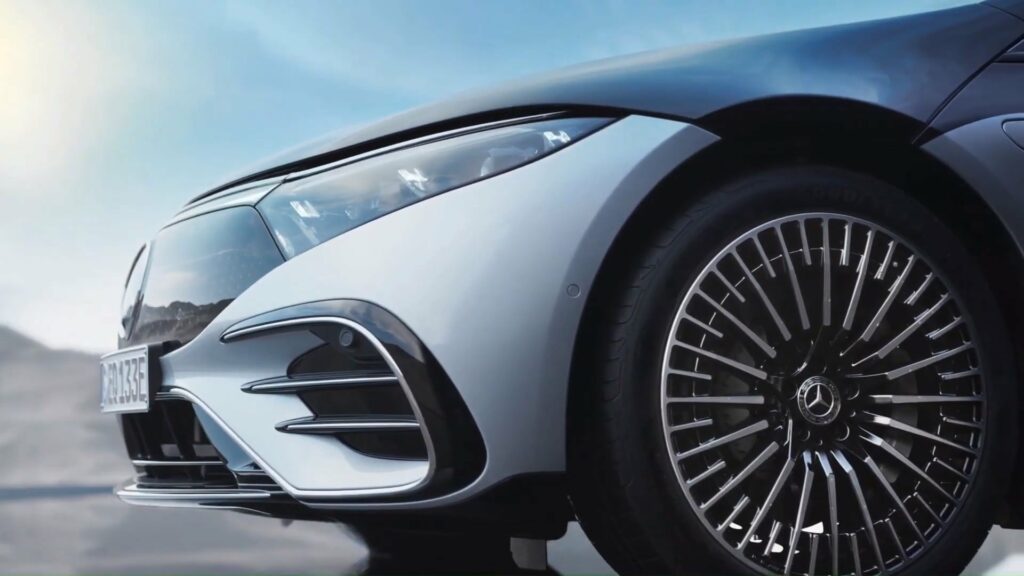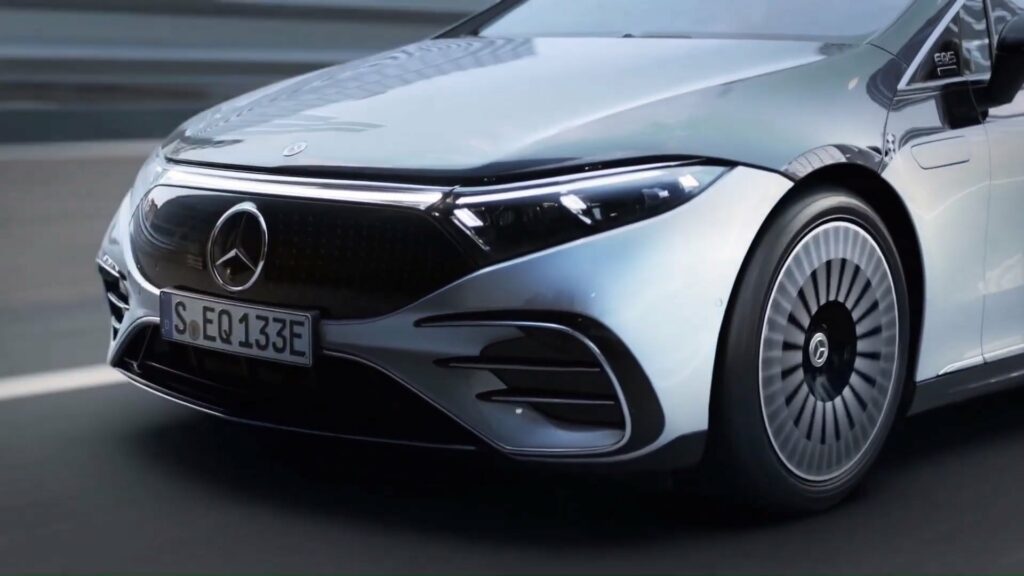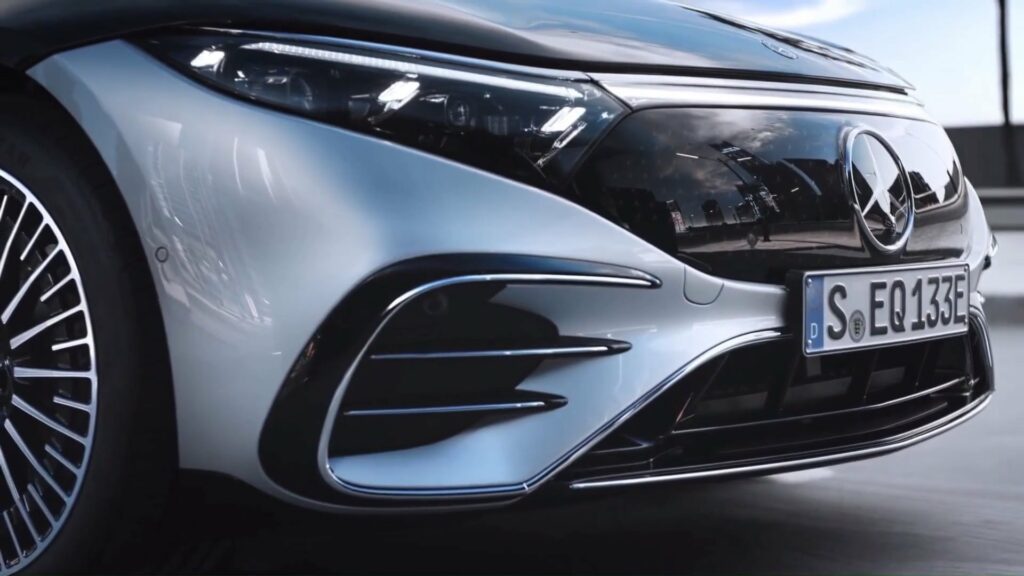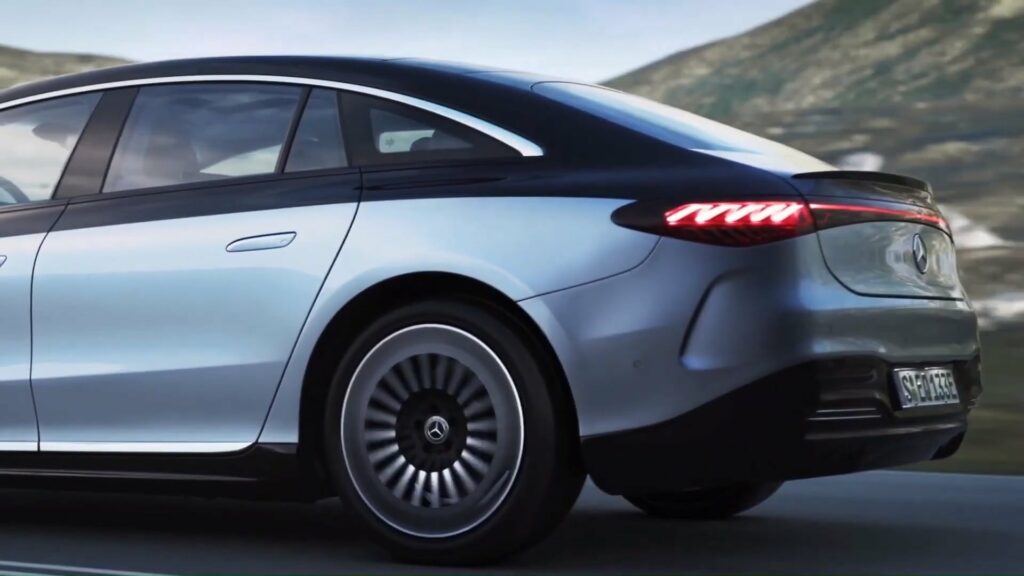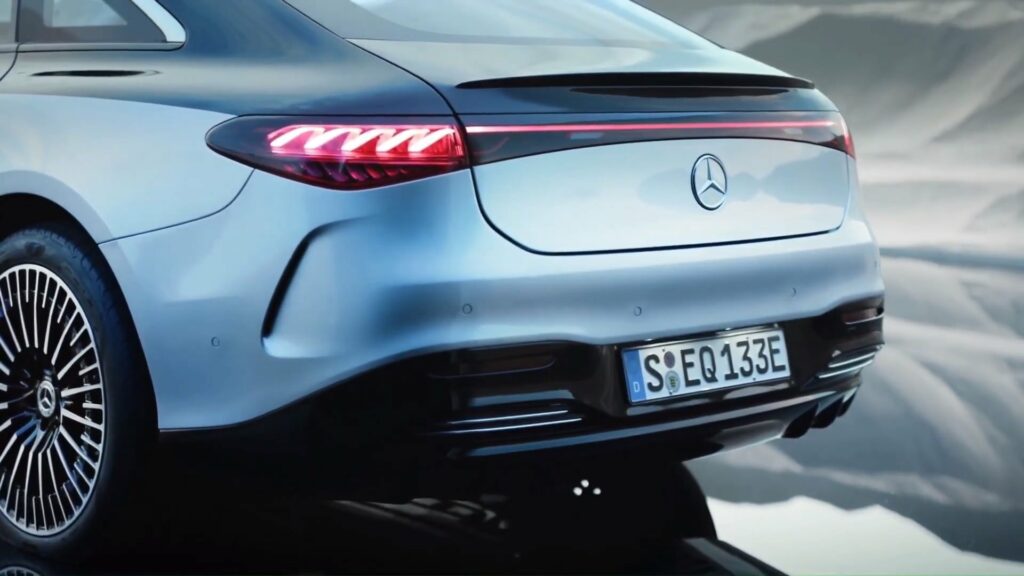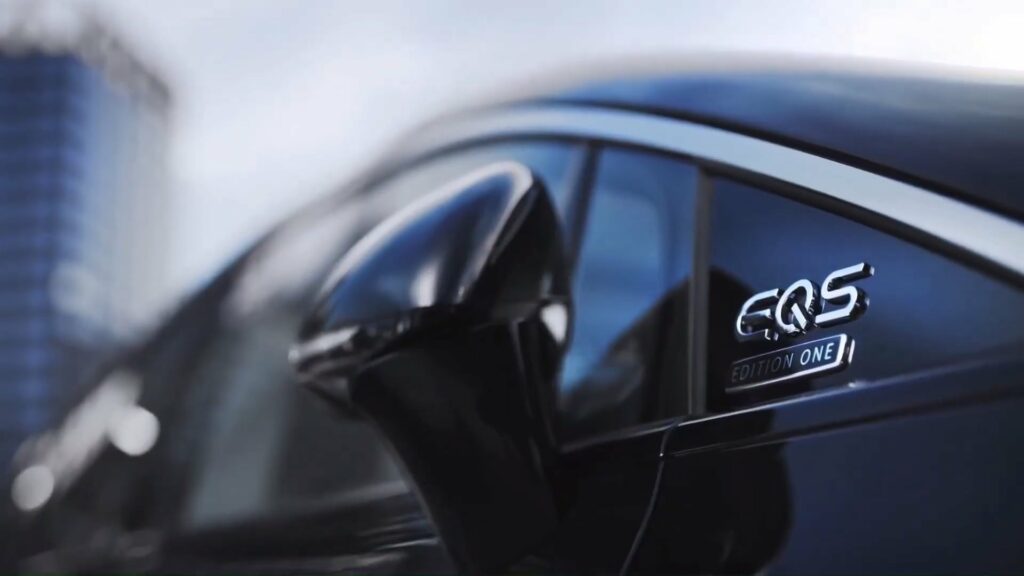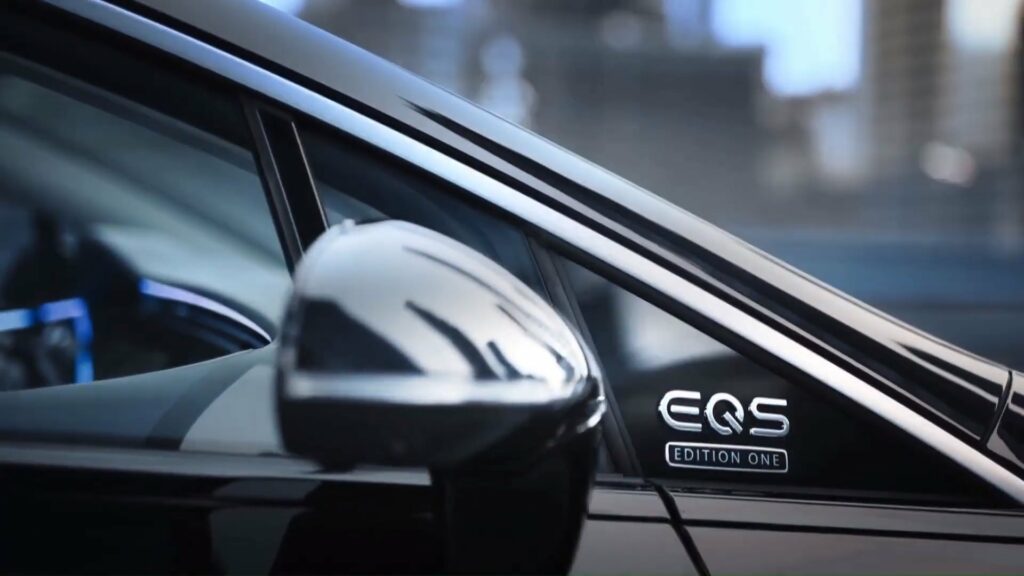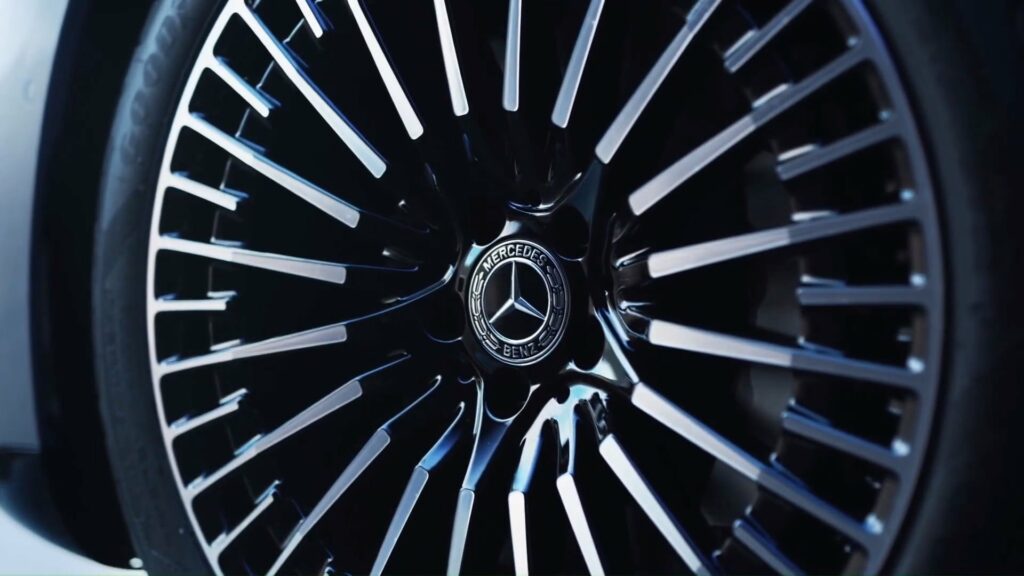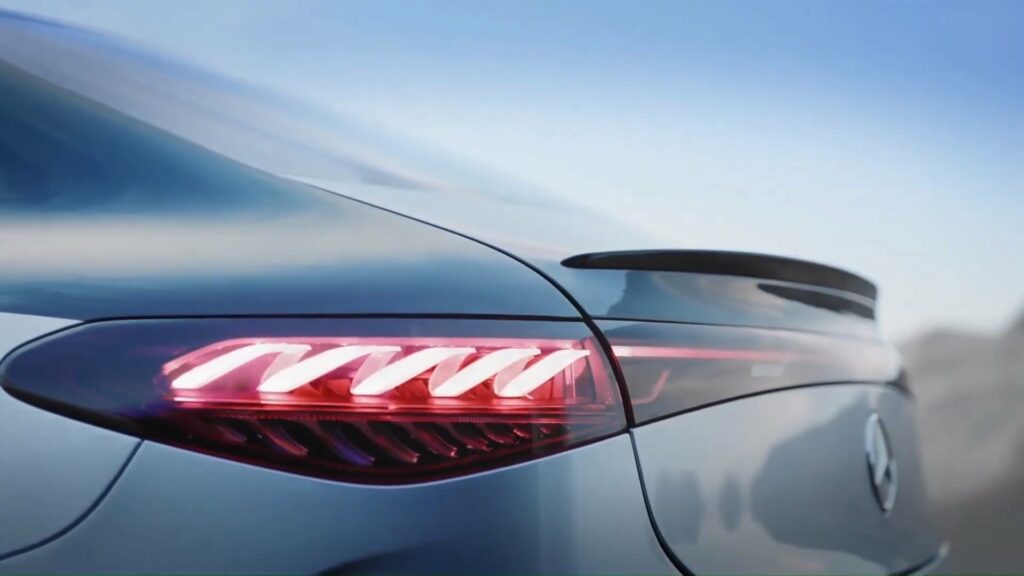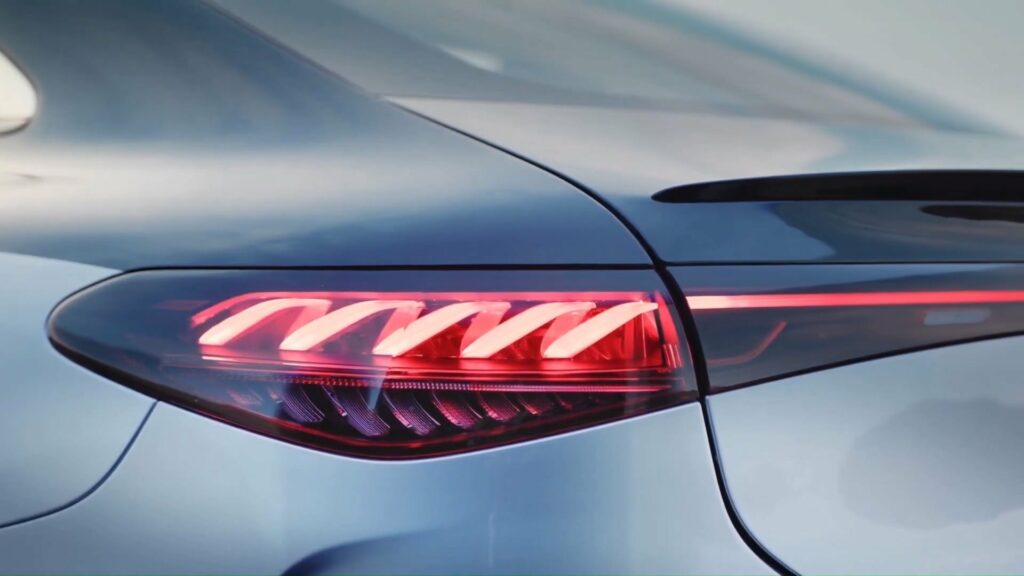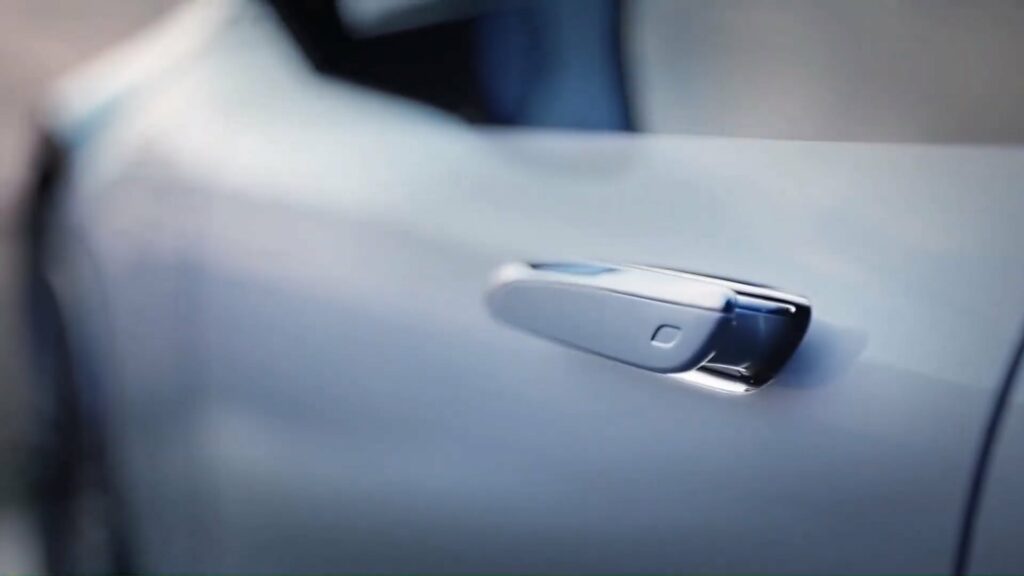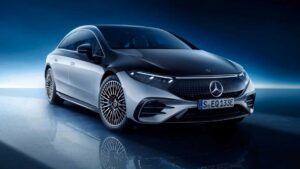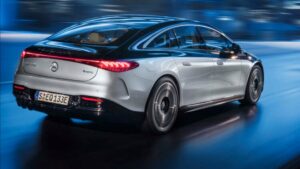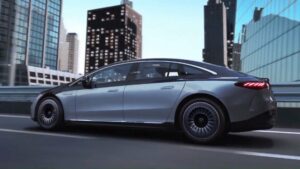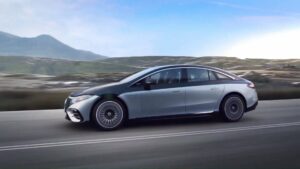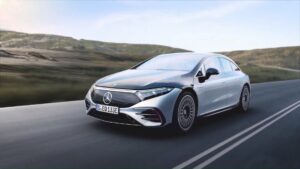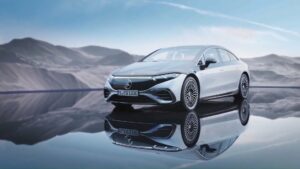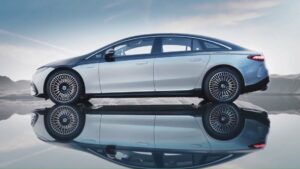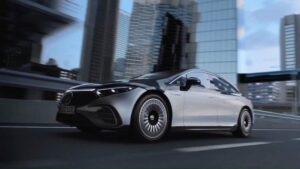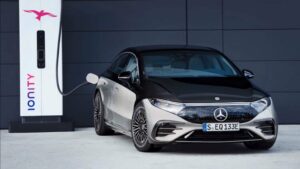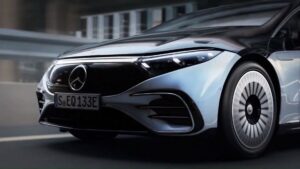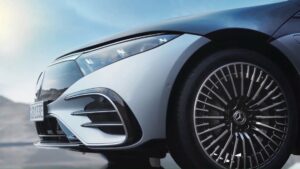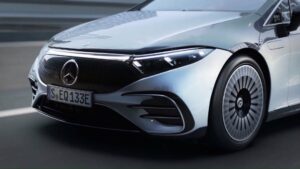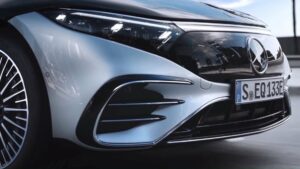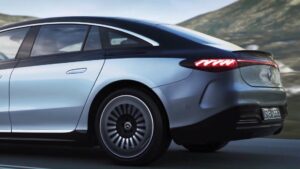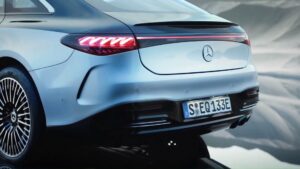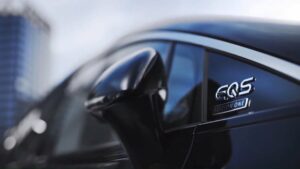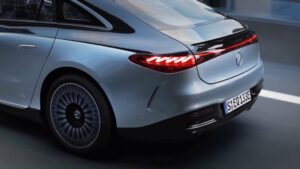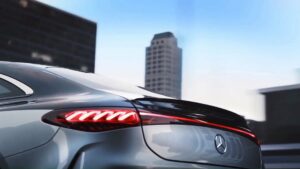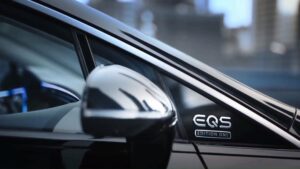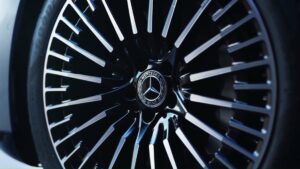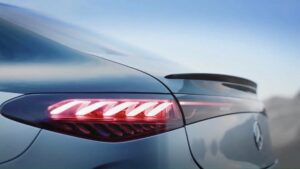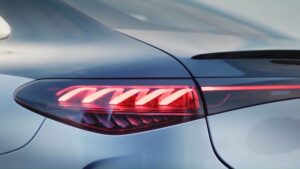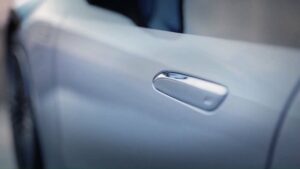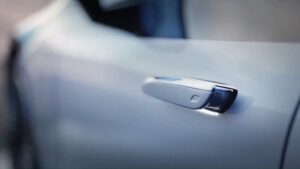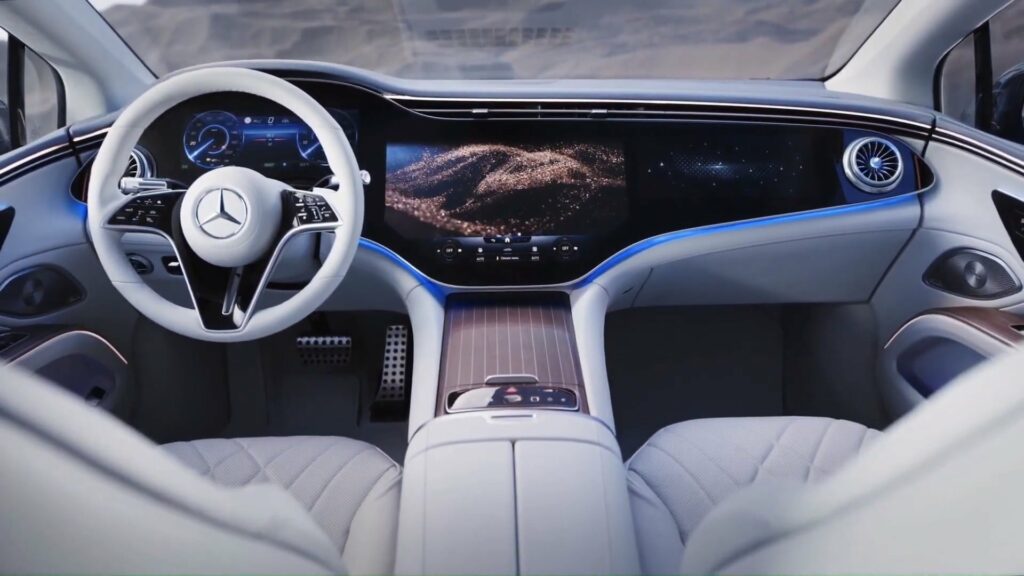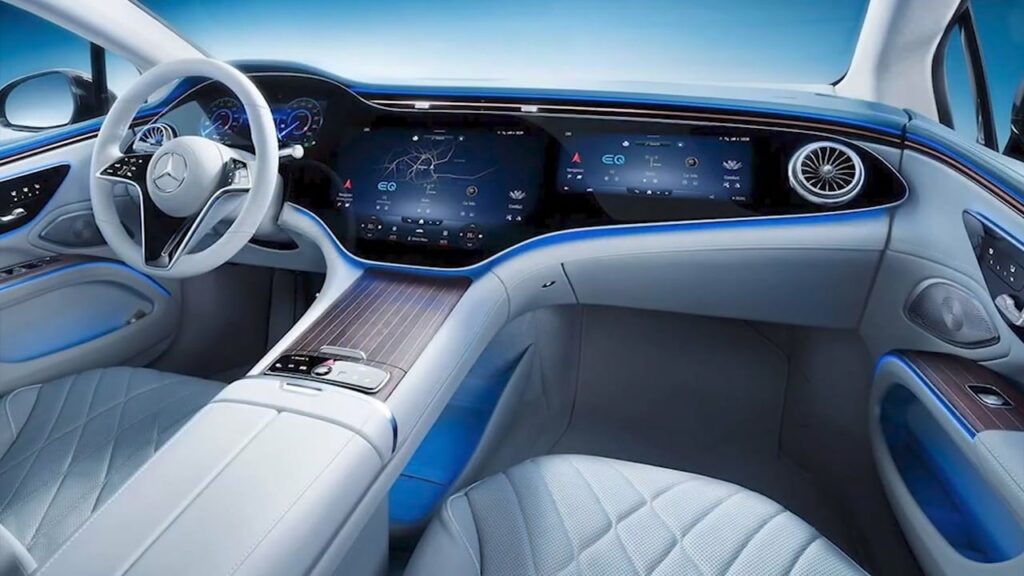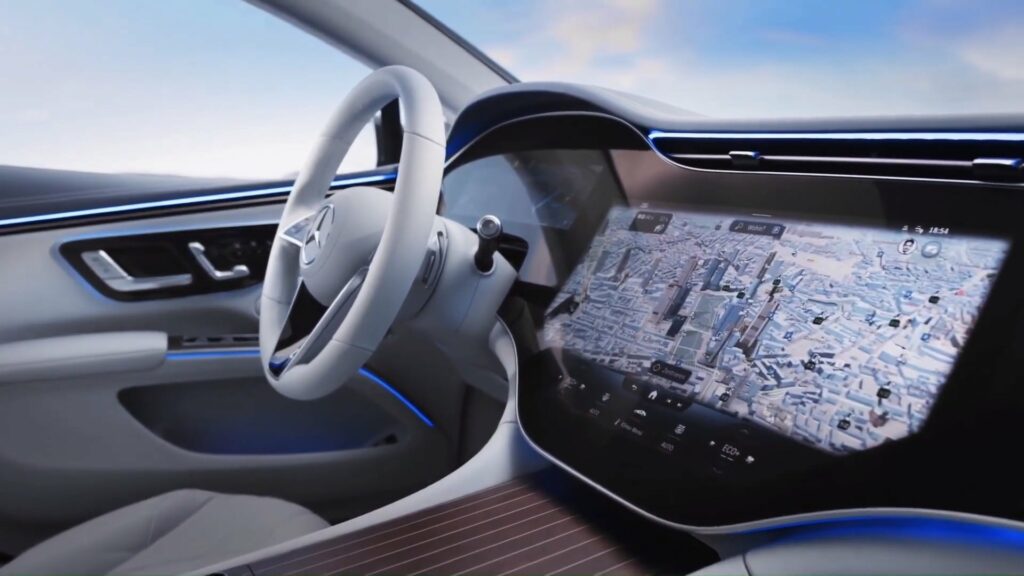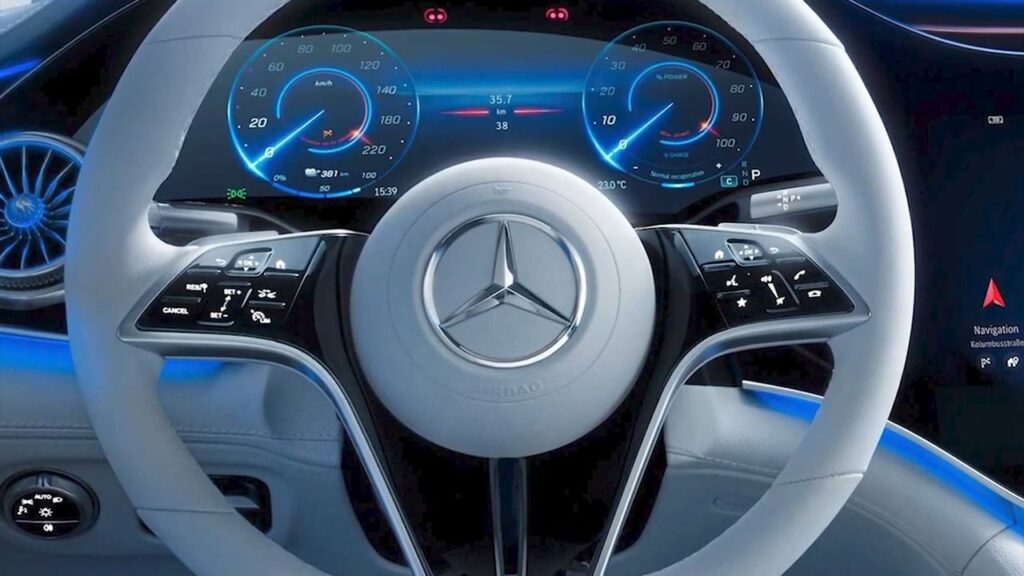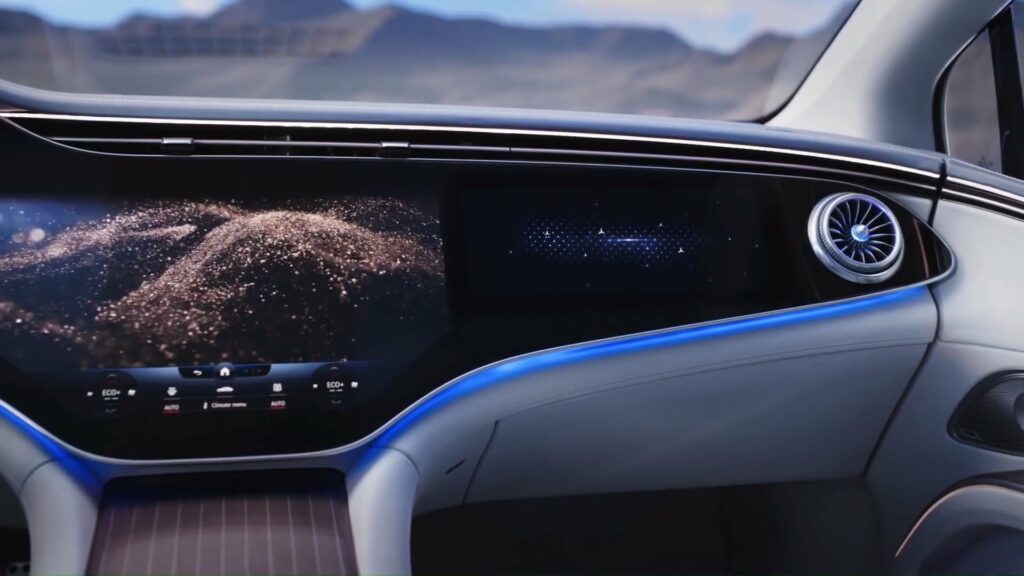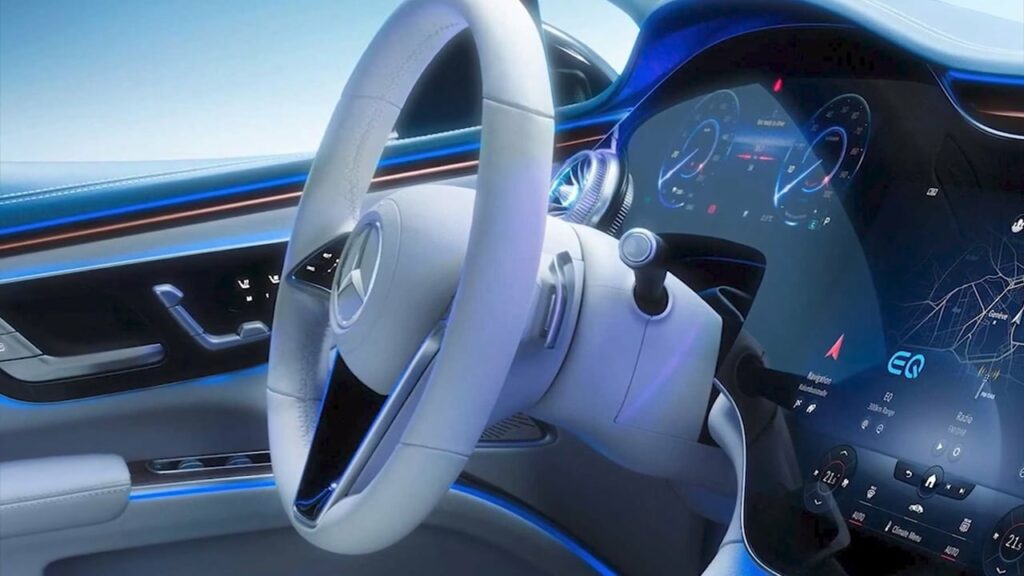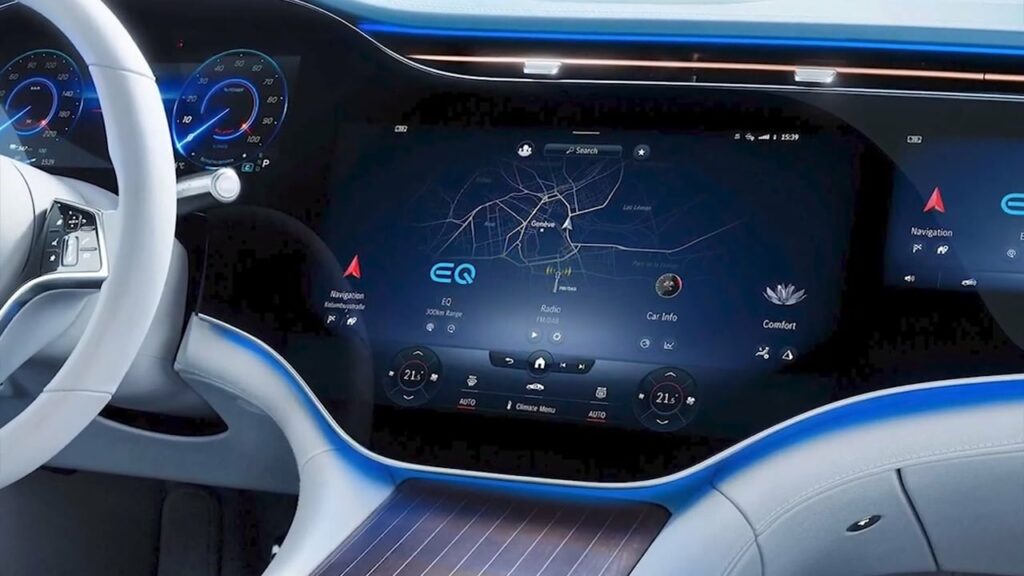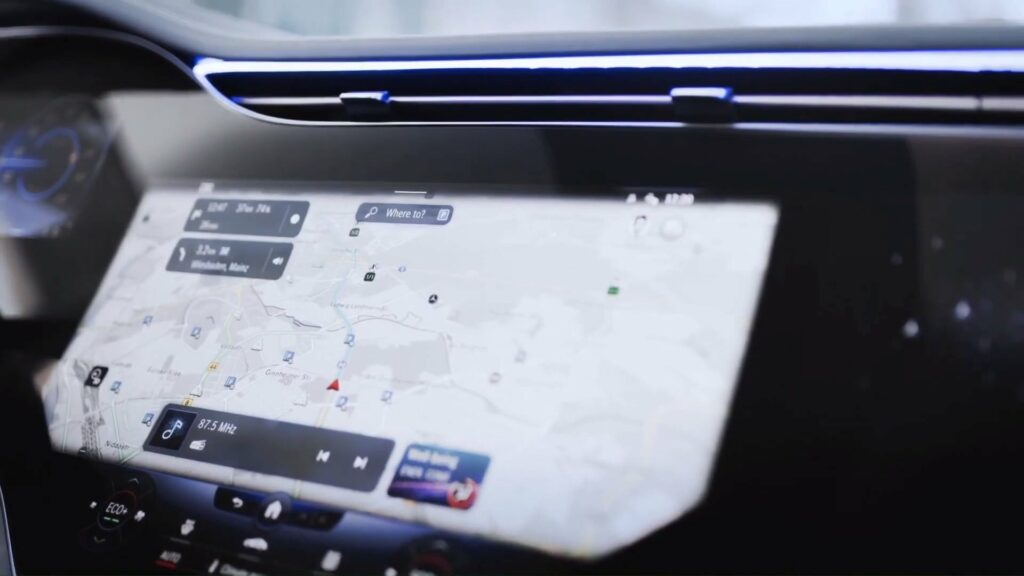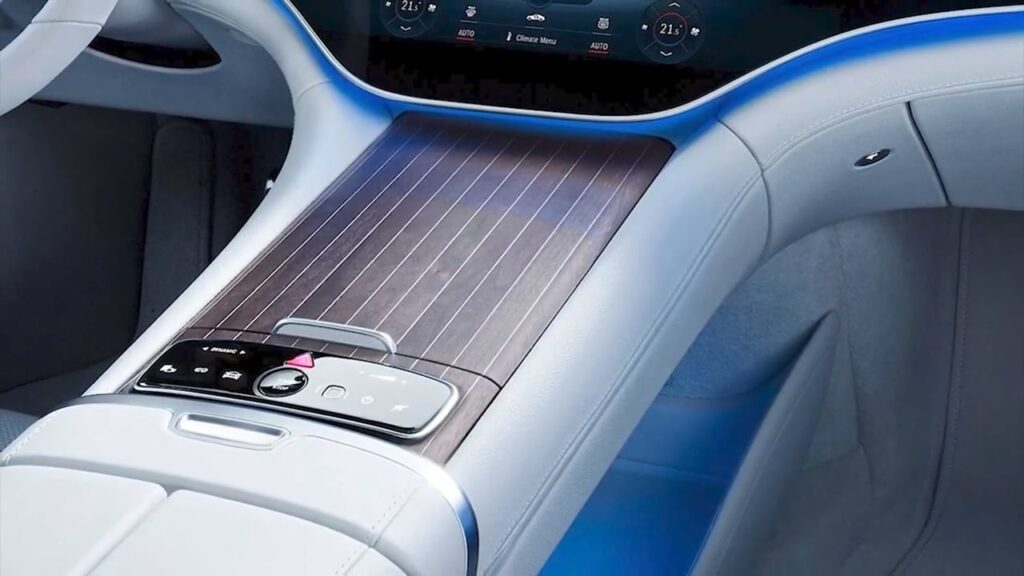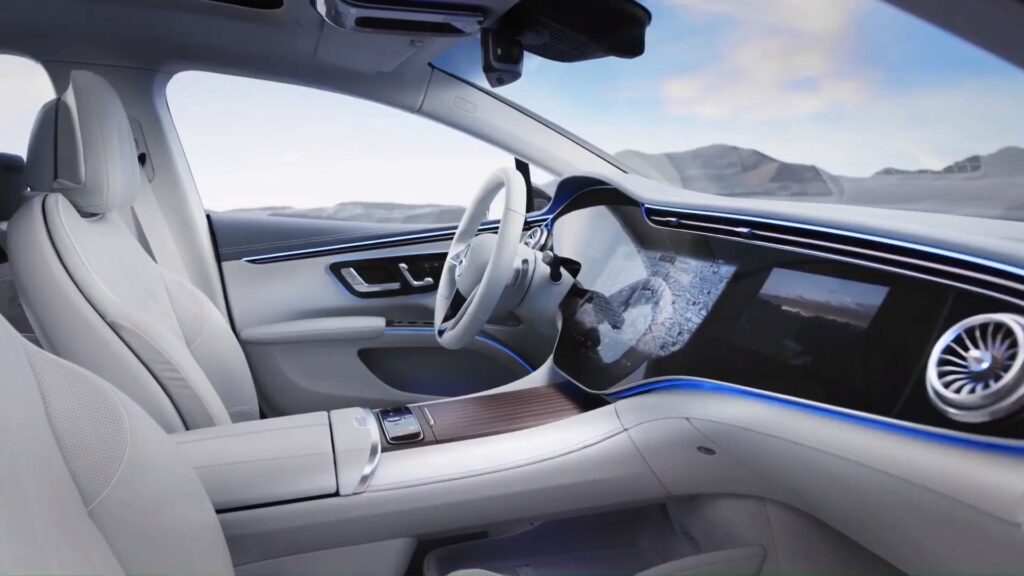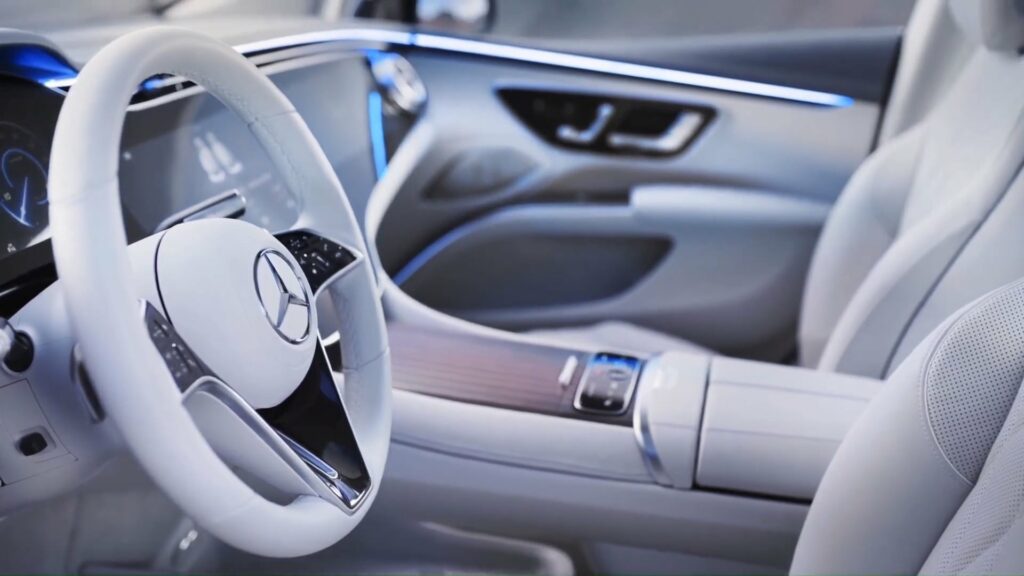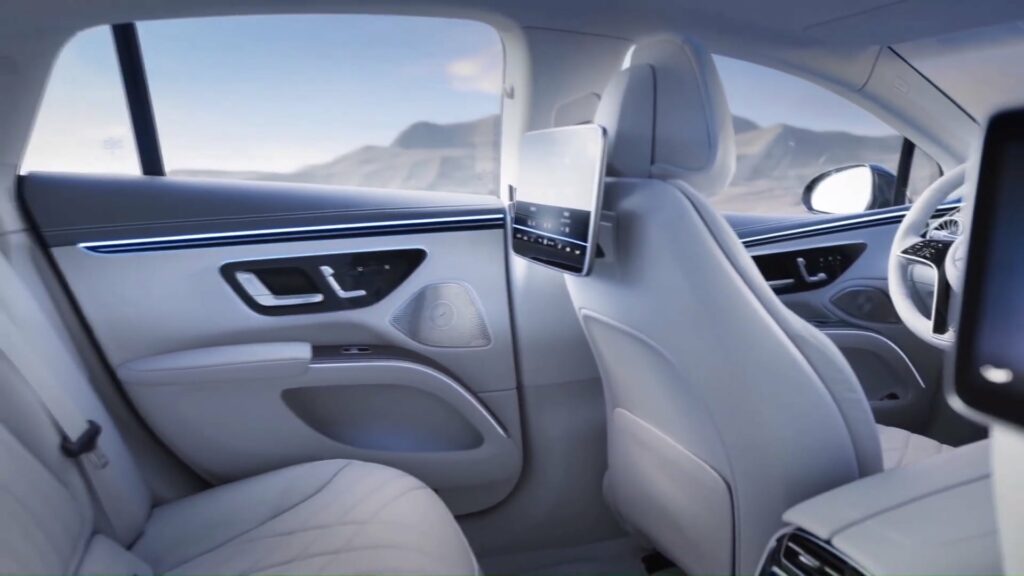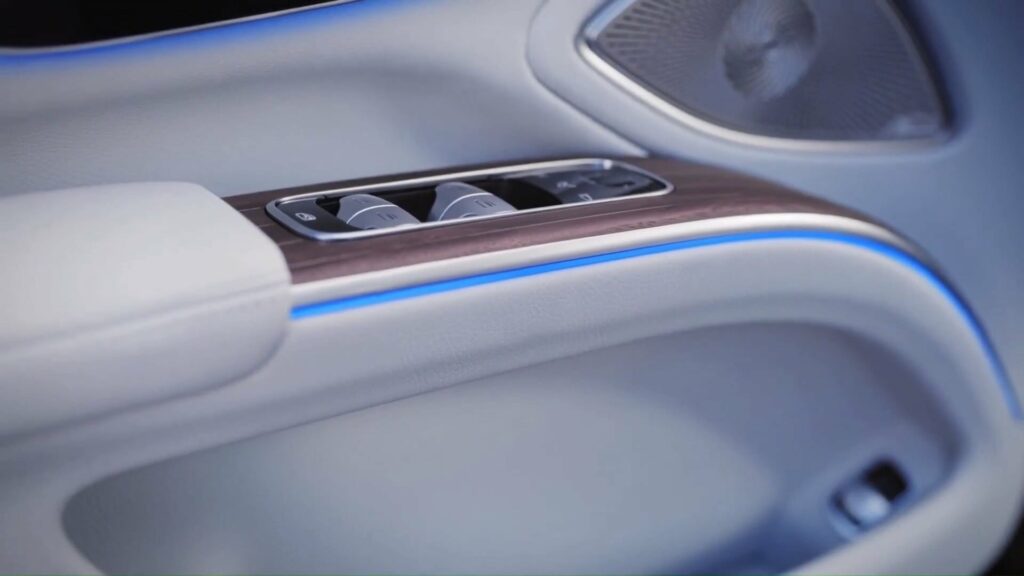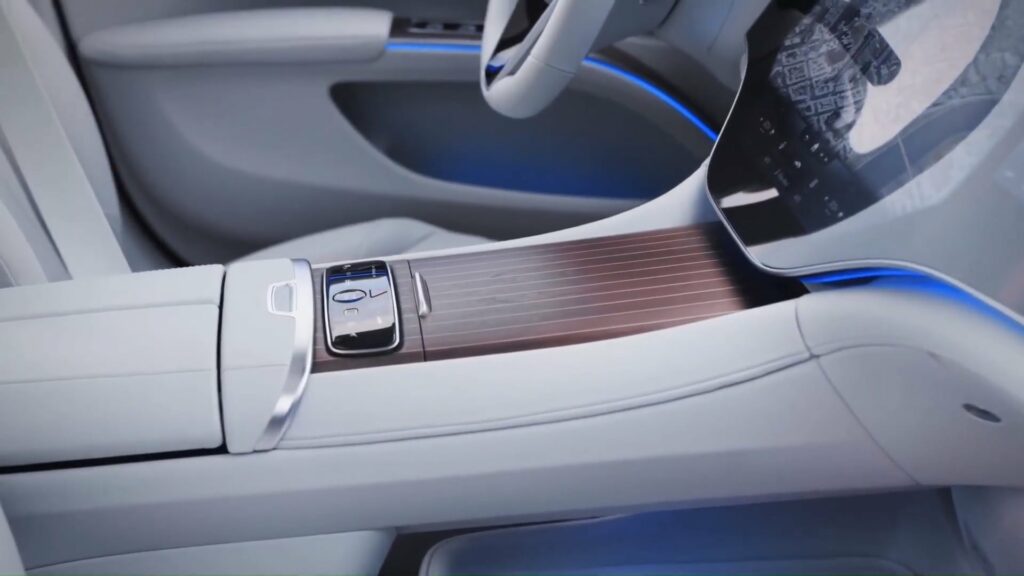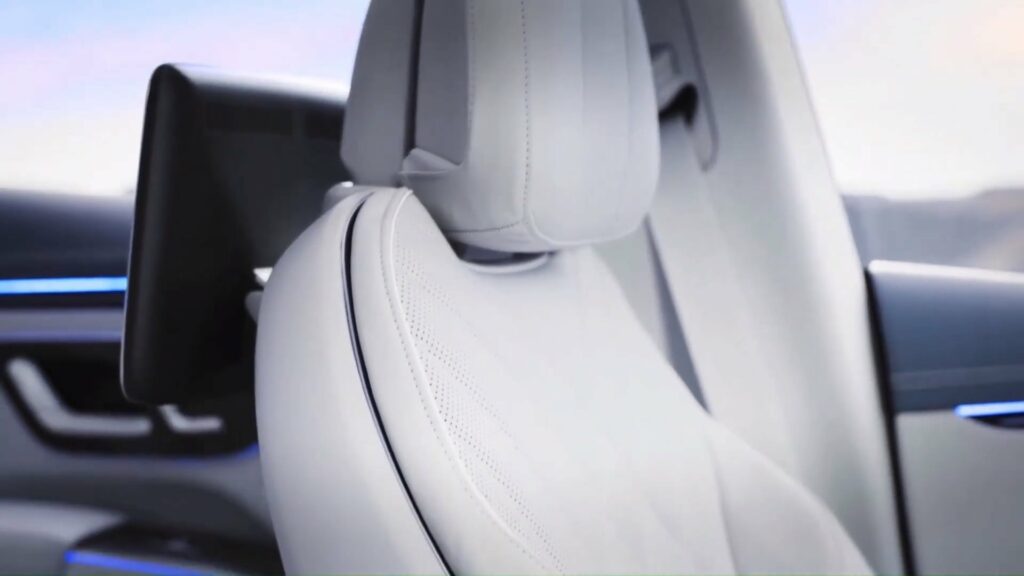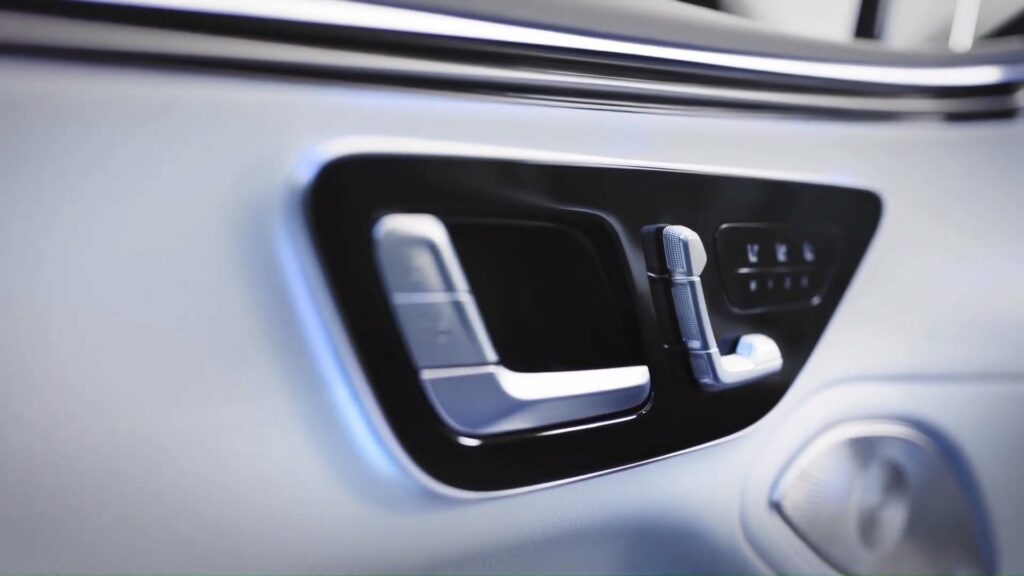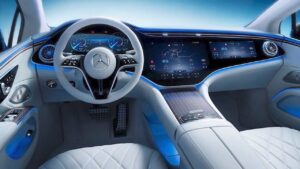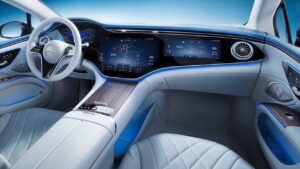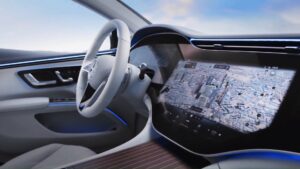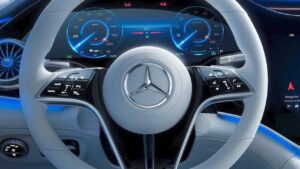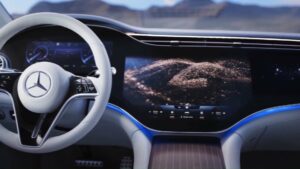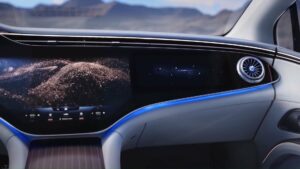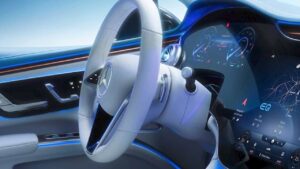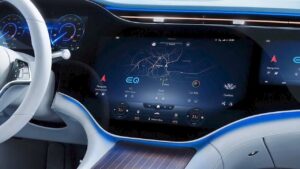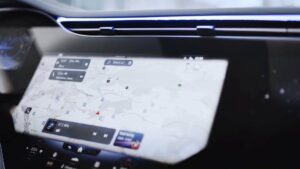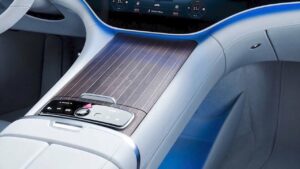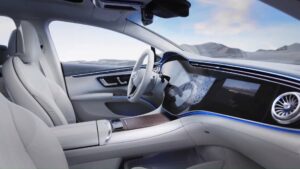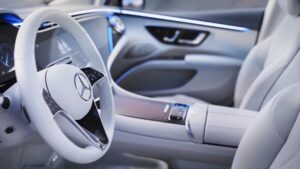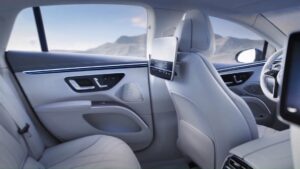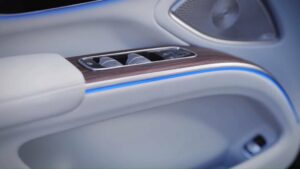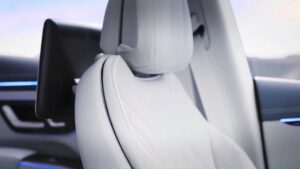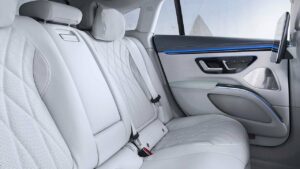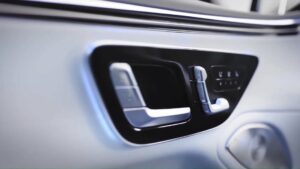Mercedes EQS 450+
The Mercedes EQS 450+ is an all-electric luxury sedan produced by the German automaker Mercedes-Benz. It is part of the EQ brand of electric vehicles and is known for its advanced technology and luxury features.
The EQS 450+ is powered by a single electric motor with 245 kW (329 horsepower) and 568 Nm of torque. The vehicle has a top speed of 210 km/h and takes 6.2 seconds to accelerate from 0 to 100 km/h (60 mph).
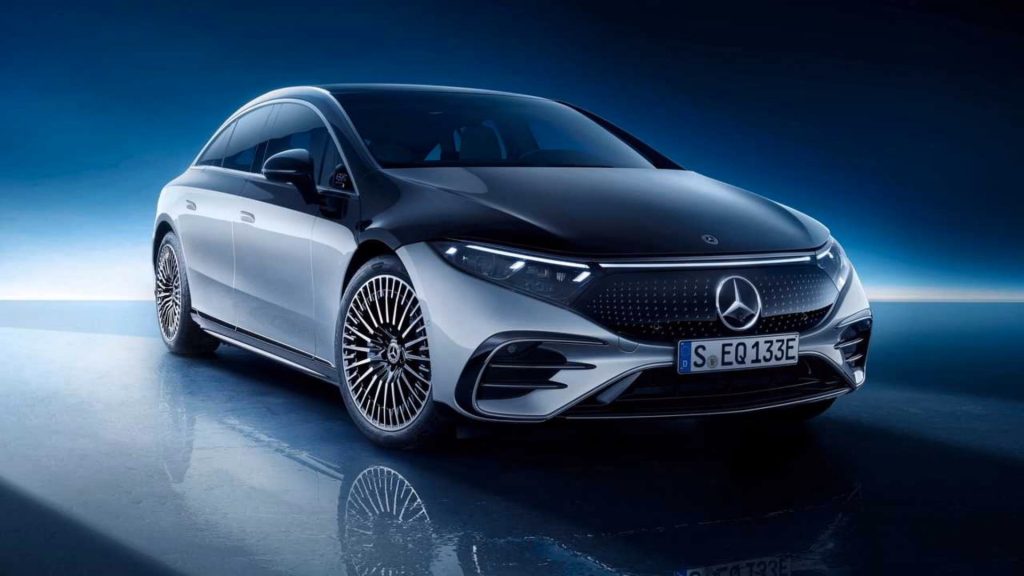
The EQS 450+ is equipped with a 120 kWh battery pack that provides a range of up to 640 km on a single charge according to the WLTP cycle. The car also supports a fast charging feature, allowing it to charge from 10 percent to 80 percent in about 31 minutes using a DC fast charger.
In terms of features, the EQS 450+ is equipped with a number of advanced technologies, including a 56-inch Hyperscreen display that occupies the entire dashboard, voice control, a digital instrument cluster, and a suite of advanced driver assistance systems such as adaptive cruise control, lane departure warning, and automatic emergency braking.
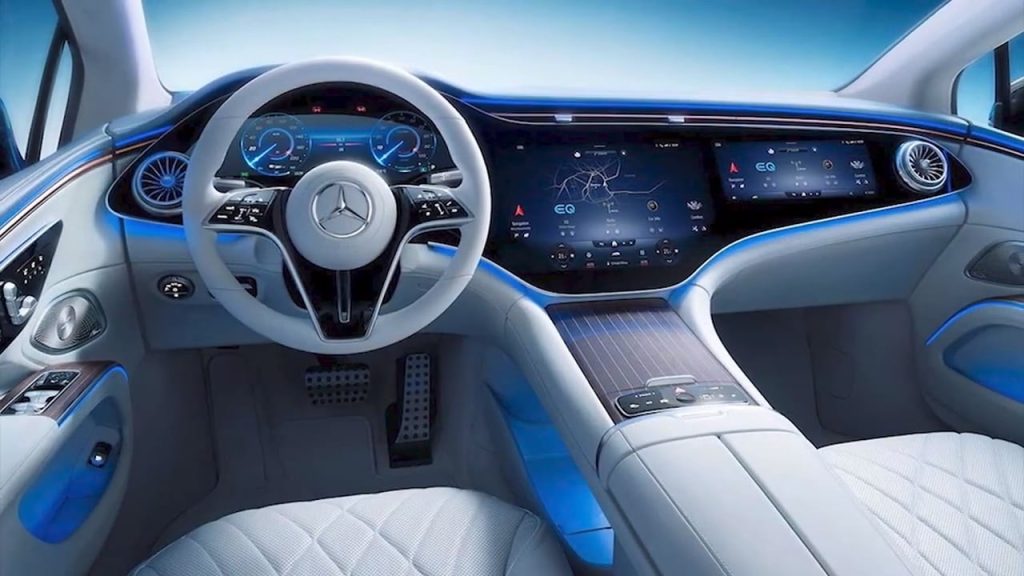
The EQS 450+ is also known for its luxurious interior, which includes premium materials, comfortable seats, and advanced climate control systems. Overall, the Mercedes EQS 450+ is a high-performance luxury sedan that offers an impressive electric range and many advanced features, making it a popular choice for drivers who prioritize luxury and sustainability.
| Performance | |
| Acceleration 0 – 100 km/h | 6.2 sec |
| Top Speed | 210 km/h |
| Electric Range | 640 km |
| Total Power | 245 kW (333 PS) |
| Total Torque | 568 Nm |
| Drive | Rear |
| Battery and Charging | |
| Battery Capacity | 120.0 kWh |
| Battery Useable | 107.8 kWh |
| Europe | |
| Charge Port | Type 2 |
| Port Location | Right Side – Rear |
| Charge Power | 11 kW AC |
| Charge Time (0->640 km) | 11h45m |
| Charge Speed | 56 km/h |
| Fastcharge Port | CCS |
| FC Port Location | Right Side – Rear |
| Fastcharge Power (max) | 200 kW DC |
| Fastcharge Time (64->512 km) | 32 min |
| Fastcharge Speed | 840 km/h |
| Energy Consumption | |
| EVDB Real Range | |
| Range | 640 km |
| Vehicle Consumption | 168 Wh/km |
| CO2 Emissions | 0 g/km |
| Vehicle Fuel Equivalent | 1.9 l/100km |
| WLTP Ratings (TEL) | |
| Range | 784 km |
| Rated Consumption | 156 Wh/km |
| Vehicle Consumption | 138 Wh/km |
| CO2 Emissions | 0 g/km |
| Rated Fuel Equivalent | 1.8 l/100km |
| Vehicle Fuel Equivalent | 1.5 l/100km |
| WLTP Ratings (TEH) | |
| Range | 631 km |
| Rated Consumption | 198 Wh/km |
| Vehicle Consumption | 171 Wh/km |
| CO2 Emissions | 0 g/km |
| Rated Fuel Equivalent | 2.2 l/100km |
| Vehicle Fuel Equivalent | 1.9 l/100km |
| TEL = Test Energy Low | TEH = Test Energy High | |
|
Rated = official figures as published by manufacturer. Rated consumption and fuel equivalency figures include charging losses.
|
|
|
Vehicle = calculated battery energy consumption used by the vehicle for propulsion and on-board systems.
|
|
| Real Energy Consumption Estimation between 120 – 229 Wh/km | |
| City – Cold Weather * | 181 Wh/km |
| Highway – Cold Weather * | 229 Wh/km |
| Combined – Cold Weather * | 201 Wh/km |
| City – Mild Weather * | 120 Wh/km |
| Highway – Mild Weather * | 175 Wh/km |
| Combined – Mild Weather * | 146 Wh/km |
|
Energy use for each trip will vary considerably depending on the driver and the conditions. Therefore, we have provided a range of estimates which can be useful in developing an understanding of the potential benefits of this technology. |
|
| Dimensions and Weight | |
| Length | 5216 mm |
| Width | 1926 mm |
| Width with mirrors | 2125 mm |
| Height | 1512 mm |
| Wheelbase | 3210 mm |
| Weight Unladen (EU) | 2480 kg |
| Gross Vehicle Weight (GVWR) | 3020 kg |
| Max. Payload | 615 kg |
| Cargo Volume | 610 L |
| Cargo Volume Max | 1770 L |
| Cargo Volume Frunk | 0 L |
| Roof Load | 100 kg |
| Tow Hitch Possible | Yes |
| Towing Weight Unbraked | 750 kg |
| Towing Weight Braked | 750 kg |
| Vertical Load Max | No Data |
| Miscellaneous | |
| Seats | 5 people |
| Isofix | No Data |
| Turning Circle | 10.9 m |
| Platform | No Data |
| Car Body | Sedan |
| Segment | F – Luxury |
| Roof Rails | No |
| EV Dedicated Platform | No Data |
Home and Destination Charging (0 -> 100%)
A public charging station is required to use the highest possible charging rate. The EVSE/charging station’s charging capacity affects how long it takes to fully charge the battery. The table below shows all possible options for fully charging the Mercedes EQS 450+.
In Europe, plugging an electric car into an outlet is often as easy as plugging it into a household outlet, but there are differences from country to country. The table below shows the different ways to charge the Mercedes EQS 450+, but in some countries some chargers may not be available.
Type 2 ( IEC 62196)
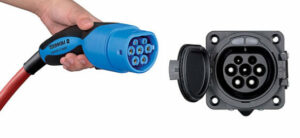
| Charging Point | Max. Power | Power | Time | Rate |
|
Standard 11.0 kW On-Board Charger
|
||||
| Wall Plug (2.3 kW) | 230V / 1x10A | 2.3 kW | 55h15m | 12 km/h |
| 1-phase 16A (3.7 kW) | 230V / 1x16A | 3.7 kW | 34h30m | 19 km/h |
| 1-phase 32A (7.4 kW) | 230V / 1x32A | 7.4 kW | 17h15m | 37 km/h |
| 3-phase 16A (11 kW) | 400V / 3x16A | 11 kW | 11h45m | 54 km/h |
| 3-phase 32A (22 kW) | 400V / 3x16A | 11 kW | 11h45m | 54 km/h |
| Optional 22.0kW On-Board Charger | ||||
| Wall Plug (2.3 kW) | 230V / 1x10A | 2.3 kW | 55h15m | 12 km/h |
| 1-phase 16A (3.7 kW) | 230V / 1x16A | 3.7 kW | 34h30m | 19 km/h |
| 1-phase 32A (7.4 kW) | 230V / 1x32A | 7.4 kW | 17h15m | 37 km/h |
| 3-phase 16A (11 kW) | 400V / 3x16A | 11 kW | 11h45m | 54 km/h |
| 3-phase 32A (22 kW) | 400V / 3x32A | 22 kW | 5h45m | 110 km/h |
Fast Charging (10 -> 80%)
If you want to enjoy driving an electric car, one of the most important features to consider is the number of miles per hour the car can travel while charged. This is called the “range” of the car. All electric cars have a certain range, even if they are 100% charged. This is because they do not have an internal combustion engine to lean on if you need to drive a long distance.
Max. Power: The maximum power provided by the charging point
Avg. Power: The average power provided by the charging point during a session of 10% to 80%.
Time: the time it takes to charge from 10% to 80%
Speed: the average charging rate during the session of 10% to 80%
Combined Charging System (CCS Combo 2)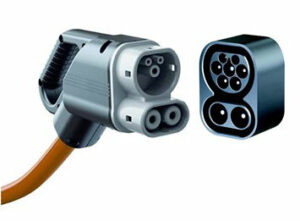
| Charging Point | Max. Power | Avg. Power | Time | Rate |
| CCS (50 kW DC) | 50 kW | 50 kW | 95 min | 280 km/h |
| CCS (100 kW DC) | 100 kW | 90 kW | 53 min | 500 km/h |
| CCS (150 kW DC) | 150 kW | 120 kW | 40 min | 670 km/h |
| CCS (175 kW DC) | 175 kW | 135 kW | 35 min | 760 km/h |
| CCS (350 kW DC) | 200 kW | 150 kW | 32 min | 840 km/h |
| Brand | Mercedes |
| Model | EQS 450+ |
| Body Style | Sedan |
| Car Engine | electric |
| Motor power | 245 |
| Maximum Torque, Nm | 568 |
| Battery Energy, kWh | 120.0 |
| Power reserve (NEDC/EPA/WLTP), km | - / - / 640.0 |
| Level Charging (230/400/DC), hours | - / 0.32 / 5.45 |
| Electrical Acceleration, 0-100 km/h (0-62.1 mph) in sec | 6.2 |
| Top Speed, km/h | 210 |

